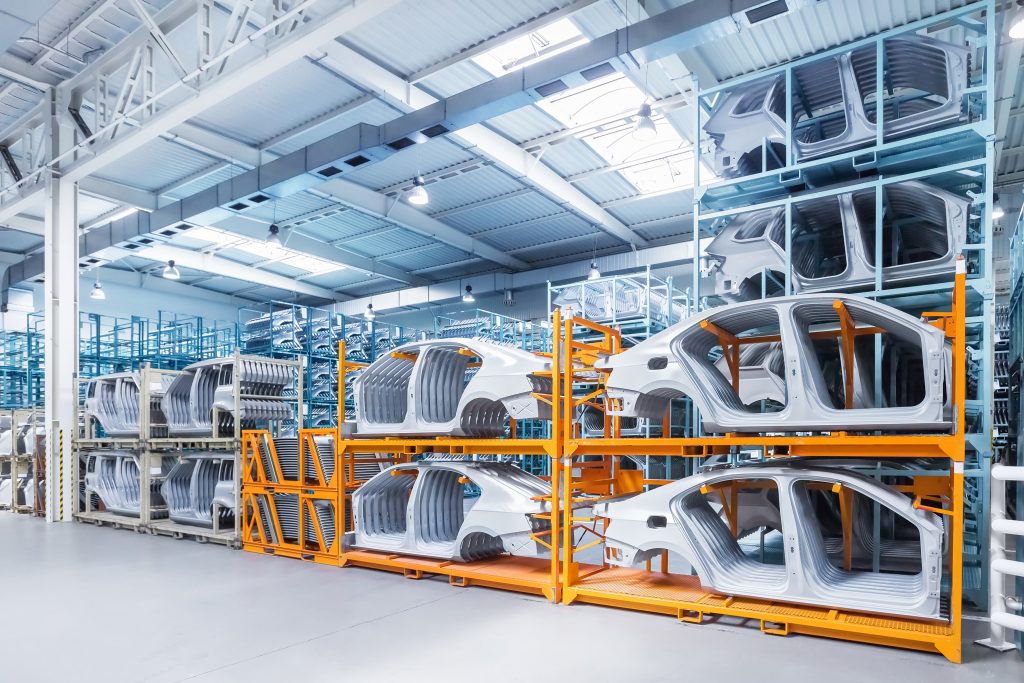Productivity enhanced
The opportunities to make manufacturing processes more productive and efficient are endless. Process engineers Stephen Mounsey and Paul Whitehead look at how process optimisation and digital technologies can make systems work harder using fewer resources, and inform smarter factory design.
The use of digital technologies in manufacturing is transforming business processes. From analysing sensor data to predict when production line equipment failures will happen to virtual simulations that pinpoint process bottlenecks before process designs are finalised: Boston Consulting Group research suggests that those who invest in digital, smart technologies and processes could increase productivity by around five to eight per cent.
Process optimisation involves taking an existing process, analysing it for waste, such as space being used inefficiently or duplicated effort, looking to see where the process falls behind on the manufacturer’s requirements, and redesigning it to drive value and efficiencies.
Process optimisation can reduce production downtime, allowing production equipment to make more products, so you get a quicker and greater return on investment. Costs are also reduced through higher uptime and there’s less disruption to delivery of customer orders.
Digital transformation
Digital processes and technologies can enhance and make this entire process faster and more accurate. Smart sensors built into production equipment collect a range of data that allows manufacturers to understand exactly how their process works.
This data can be fed into software to create and refine a virtual simulation of the process that reflects the real world, and generate simulated stress tests such as equipment failures, to see how they could affect production.
Rebooting risk
From here, it’s possible to investigate and highlight weak points in a process as identified by the simulation or analysis. This information can then be used to make adjustments to the production flow, prove how the changes will improve production and drive efficiencies, and identify problems before making the changes to the shop floor, reducing overall risk.
A major advantage of Industry 4.0 is the ability to digitally connect, store and centralise all process and facility information in real time, usually through a cloud-based system. Compared to a non-Industry 4.0 factory, data is usually siloed, can be difficult to access and typically requires going through many people and multiple systems to retrieve the information.
Modelling the future
In 2016 we designed and optimised a new vehicle body and skid-handling process for a German car manufacturer at one of their South African plants. To do this, we reviewed their existing, similar process designs at other plants and designed a new system to meet the South African plant’s requirements, such as desired production rate and spatial constraints.
We modelled and refined our system designs using Lanner’s WITNESS software before generating a 3D model of the designs. We fed this data through to the structural engineers using a collaborative Building Information Modelling platform, allowing them to wrap the building design around the equipment.
No bottlenecks, no blockages
The simulation demonstrated to the client that there were no bottlenecks in the system and that if a blockage was to occur in a key production area, the process would continue running for an hour before stopping; a key criterion set by the client.
The simulation also showed how many pieces of conveyor equipment would be needed: our optimised designs used significantly fewer pieces of conveyor equipment compared to their existing systems, reducing overall investment.

From the inside out
Typically, factory shells are designed with little reference to the process design. But to truly drive efficiencies across processes and entire facilities, it makes sense to use process‑led design, as our designs for a British car manufacturer show.
By grouping their low and high level processes and re-sequencing the entire assembly line, we reduced the number of overhead carriers needed, leading to a cost saving for the client. Reducing the overhead carriers meant we could reduce the strength of the building in parts, lowering building costs. Through grouping the processes and changing the manual process layout we also reduced the building’s total footprint.
Disrupting the status quo
Smart digital and virtual processes are enabling us to generate, collate, analyse and use data to make better-informed business decisions, leading to greater connectivity between process, product and people, helping manufacturers respond to customer demands more quickly.
Manufacturers are already starting to adapt to these smarter ways of doing things, with those willing to embrace the digital revolution, and do things differently from how they’ve always done them, the most likely to stay competitive in the long term.







